2024 Toyota Tundra TRD Pro Review: Great Off-Road, But Not at Towing
Love It | Leave It |
|---|---|
Incredible Off-Road | Not Great for Towing with Off-Road Suspension |
Beautiful Design Inside and Out | Fuel Economy While Towing |
Tons of Technology and Features | Lacks Interior Storage |
Great Driving Dynamics | Missing Some Features for the Price Point |
Another moose hunting season, another truck, and another 24-hour roundtrip drive. All for the chance of glory, and meat in the freezer. Luckily, this year we got to do it all in style with the 2024 Toyota Tundra TRD Pro. There was plenty we liked about the truck, but also things we did not. I’ll get the negatives out of the way first, then move on the positives.
Not at Home Towing
Every year, we pack way too much stuff, and this year was no exception. With all our camping gear, hunting gear, food, a 2,000-pound UTV, an endless supply of propane, and enough gas to keep “big oil” alive, our trailer is running around 5,500 pounds. That should have been light work for the Tundra with its 12,000-pound towing capacity, except it wasn’t.
The TRD Pro features an off-road-orientated suspension that has softer spring rates. With a trailer like ours, that puts a lot of weight on the rear springs and causes the truck to squat, a lot. I was shocked when we dropped the trailer on the hitch how much the front of the truck lifted. It’s more than any truck has dipped in our seven years of taking these trips.
Despite that, the truck seemed to drive perfectly fine, and you really didn’t notice the trailer back there, until we got on the highway.
Power and Fuel Economy
The truck has plenty of power to get moving with the i-Force Max hybrid engine making 437 horsepower and a whopping 583 lb-ft. of torque. But driving above 60 mph (100 km/h) was a challenge as the trailer's weight and freeway crosswinds wanted to direct the truck in directions other than forward.
Although the TRD Pro is officially rated at 18 mpg (12.7 L/100 km) city and 20 mpg (10.5 L/100 km) highway, we averaged 8.9 mpg (26.4 L/100 km) in terms of fuel economy. That isn’t great, but right around what other owners experience when towing similar weight. As far as our hunting trips go, this ties the Ram Powerwagon used on a previous trip for worst fuel economy.
The power curve on the hybrid engine favors the low RPM range, and loses steam in the higher rev range. It doesn’t feel as robust as the impressive output numbers suggest. This has a lot to do with the vehicle’s weight though. It tips the scales at 6,015 lbs. due to all that hybrid and battery tech.
Comfort Rich, But Tight on Space
Those that appreciate and use the storage space under the rear seats with a relatively flat floor will not like the Tundra’s set-up. Being a hybrid, some of the battery and tech take up storage space which made our trip more cramped than usual. Also, the heated or ventilated rear seats are not included in this trim package.
Now that I've gotten the negatives out of the way, on to what I liked about the truck. For starters, the interior is beautiful. The cooled and heated, digital camo seats, with red stitching, not only look awesome, but they are incredibly comfortable. The big shift knob with red leather has a meaty feel, the enormous center console helped alleviate the lack of storage in the back, and the attention to detail like the Toyota badge across the dash, and the red stripe and TRD Pro badge on the steering wheel, remind you that you’re driving a unique and premium vehicle.
Packed with Technology
Dead center on the Tundra’s dash is a big 14-inch multi-media screen. Since I tend to stick to the wireless Apple CarPlay, I didn’t use the voice commands too much. It’s cool though that there are two separate microphones that can determine whether the driver or passenger is speaking. So, if the driver says, “I’m cold”, it will only adjust the climate control on their side.
There are a plethora of USB-A and USB-C ports in the front and rear which is good because the wireless charging pad failed to charge our phone most times.
Excels Off-Road
We finally arrived at our spot in Ontario’s incredibly vast wilderness, and after spending the better part of an entire day in the truck, then unpacking the endless amount of supplies and setting up our camp, I finally got a chance to test this thing in its natural habitat. Off-road!
Finally, with the trailer unloaded, the cab cleaned out and only me in the cockpit, I could put this thing through its paces. The first thing I noticed without all the weight was how well it handled and how good the steering wheel felt. It might be the most connected I’ve ever felt to a truck’s inputs, and it made it a ton of fun to drive. The first spot I went to is a giant sand pit with all sorts of rough terrain, that absolutely hammered the suspension, but you could barely feel it, with those fox shocks and additional 1.1-inch of suspension lift.
I wasn't out there just for fun though. We needed to scout for signs of moose, so I got to put the Falken Wild Peak A/T tires through a ton of different terrain. There was sand, gravel, mud, and even slippery rocks, and they performed great through all of it. There were only a few spots where I put it in 4-low, and it performed incredibly, but I probably didn’t even need it.
One of the coolest features, which really came in handy while picking through big rocks, was the multi-terrain monitor. It shows the very edge of your tires as well as a front-view with steering input guidelines that eliminates the need for a spotter when going through really nasty stuff. And, that big TRD emblazoned skid plate at the front, protects you when you over estimate the 9-inches of ground clearance. Another thing to note, which I never used on this truck, but very recently used on the new Tacoma, is “Crawl Control”. It slowly, and without driver input, can get you unstuck from sand or mud. It’s really incredible to watch.
Other Highlights
Over the next 6 days I had a bit of time to notice a couple other features. The truck has a lot of presence with a prominent grille, headlights that are sleek but aggressive, the flared fenders, and ‘TRD Pro’ stamped tailgate. I do wish the truck had one of the running board accessories instead of rock rails, but that would take away from some of its off-road capability.
I really like the button in the rear driver side tail light that opens the tail gate of the truck. This is incredibly handy when I had my hands full. I could just bump it with my elbow and it pops open. The rubber liner in the bed, which really helped stop our gas cans and propane tanks from sliding around while driving, is another plus. It does make loading things to the back of the truck more difficult as they just can’t slide back.
The 400w power inverter in the bed, as well as the one in the back seat, can handle a moderate amount of draw, which came in handy a few times. There are a lot of different cameras and angles that can be viewed through the infotainment screen. My favorite is the bed camera. It was handy on the long drives, allowing us to see if our gas cans and propane tanks were still where we left them.
But my favorite feature is the TRD Light bar. While driving at night, it’s typically hard to see if there are animals at the side of the road ready to pounce in front of you. During hunting season it happens a lot. But that light bar lit up the sides of the road like the 4th of July and I could see a moose coming from a mile away.
Safety
Toyota’s safety sense 2.5 is pretty awesome. You get a host of features like Dynamic Radar Cruise Control, Pre-Collision System with Pedestrian Detection, Risk Avoidance with Steering Assist, and the one main feature which I really wanted to test out, Lane Tracing Assist. Unfortunately, this feature doesn't work while towing a trailer like we had, so I didn’t get to test it out. I can’t tell you how much I wanted that feature with a 12-hour drive home, but thankfully I at least still had Radar Cruise Control and comfy seats.
The Verdict
Much like our moose hunting trip this year, the truck delivered some good and some bad. It does a lot of stuff right, like the connected driving feel, the off-road prowess, the aggressive exterior design, beautifully detailed interior loaded with technology, comfort, and unique features. But it also does stuff poorly, like towing for example.
We had a sizeable rear-end squat with only a 5,500-pound trailer on the back, a far cry from the 12,000-pound limit. It’s also lacking in interior storage, and we learned it would be worth the additional cost to add one of the running board step accessories. I’m also shocked there are no heated rear seats at an MSRP of $73,980 including destination charges ($88,840 Canadian), considering the less expensive 1794 Edition includes them.
So, if you plan to do a lot of towing, better to stick to the Tundra Capstone or 1794 edition. If you need to get to a remote hunting spot trailer free, the TRD Pro is the answer.
Become an AutoGuide insider. Get the latest from the automotive world first by subscribing to our newsletter here.
Fast Facts | |
|---|---|
Engine: | 3.4-liter turbo six-cylinder hybrid |
Output: | 437 hp, 538 lb-ft |
Transmission: | 10AT, 4WD |
Fuel Economy (mpg): | 18 city, 20 highway |
Fuel Economy (L/100 km): | 12.7 city, 10.5 highway |
As Tested Price (USD): | $73,980 incl. dest. |
As Tested Price (CAD): | $88,840 incl. dest. |
A long-time video producer for AutoGuide.com, Chris has traveled the world with editors to capture first drives of the latest new vehicles, from Car of the Year shoots in the hills of Southern California to Lamborghinis on race tracks in Spain. Now he spends his days as the Director of Photography for Geared Content Studios, producing high quality video projects for brands like Toyota and Subaru. Chris is also an avid hunter and outdoorsman, so when he does write for AutoGuide it’s generally for a thorough test of a new pickup truck on one of his latest camping adventures.
More by Chris Blanchette



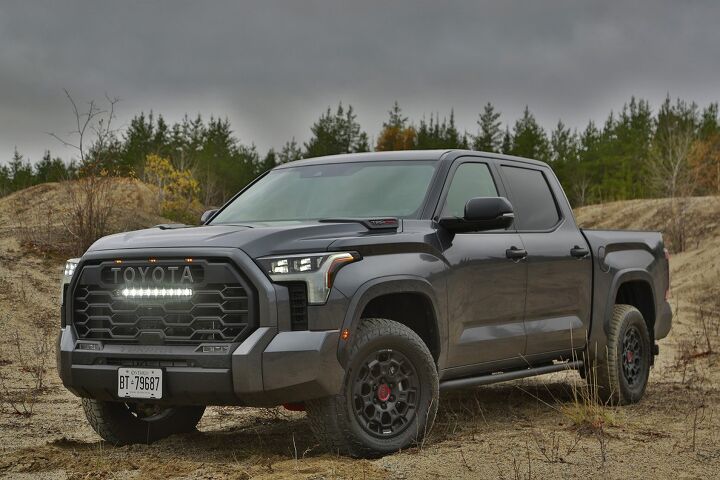












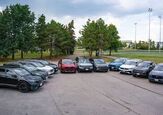
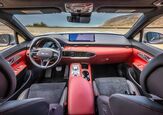




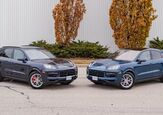
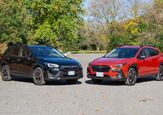

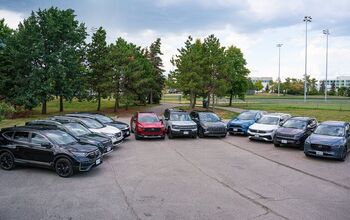
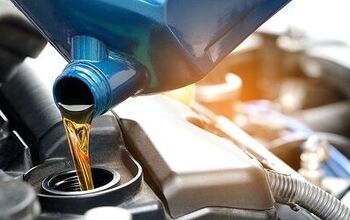
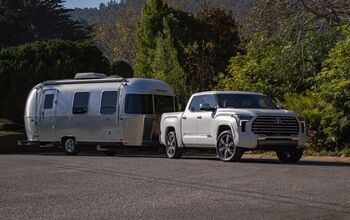














Comments
Join the conversation
What was the tongue weight of the 5,500 pound trailer? If the trailer wasn't balanced properly, it could easily have been higher than that of a properly loaded 10,000 pound trailer.
Agree with the above commenter. Doesn’t sound like a weight distribution
hitch with equalizer bars were used making for a rather unsafe tow situation! I used to tow a 25’ 6000+ lb Airstream with my Suburban and never had a problem. BUT when trying to pull it short distances it would pull the front up a bit (w/o the WD hitch & bars…) and make for a tenuous steering situation on the highway, at best! So, do it the right way rookie!